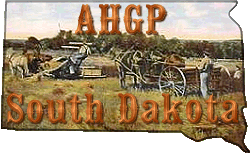 |
South Dakota
|
In 1803, the United States purchased
the Louisiana Territory, an area that included most of South Dakota,
from Napoleon Bonaparte, and President Thomas Jefferson organized a
group commonly referred to as the "Lewis and Clark Expedition" to
explore the newly acquired region. In 1817, an American fur trading post
was set up at present-day Fort Pierre, beginning continuous American
settlement of the area. In 1855, the U.S. Army bought Fort Pierre but
abandoned it the following year in favor of Fort Randall to the south.
Settlement by Americans and Europeans was by this time increasing
rapidly, and in 1858 the Yankton Sioux signed the 1858 Treaty, ceding
most of present-day eastern South Dakota to the United States.
In 1861, the Dakota Territory was
established by the United States government (this initially included
North Dakota, South Dakota, and parts of Montana and Wyoming).
Settlement of the area, mostly by people from the eastern United States
as well as western and northern Europe, increased rapidly, especially
after the completion of an eastern railway link to Yankton in 1873 and
the discovery of gold in the Black Hills in 1874 during a military
expedition led by George A. Custer. This expedition took place despite
the fact that the western half of present day South Dakota had been
granted to the Sioux in 1868 by the Treaty of Laramie as part of the
Great Sioux Reservation. The Sioux declined to grant mining rights or
land in the Black Hills, and war broke out after the U.S. failed to stop
white miners and settlers from entering the region. The Sioux were
eventually defeated and settled on reservations within South Dakota and
North Dakota.
An increasing population caused the
Dakota Territory to be divided in half and a bill for statehood for both
Dakotas titled the Enabling Act of 1889 was passed on February 22, 1889
during the Administration of Grover Cleveland. His successor, Benjamin
Harrison, signed proclamations formally admitting both states on
November 2, 1889. Harrison had the papers shuffled to obscure from him
which he was signing first and the actual order went unrecorded.
Resources
Contact
©2014 Present
All Rights Reserved
|